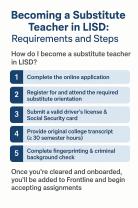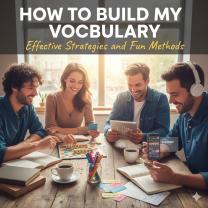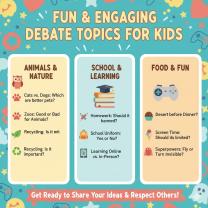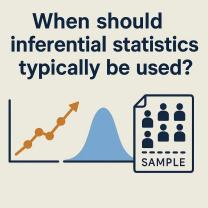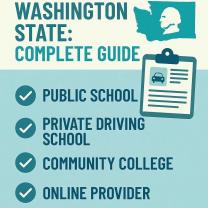How are teachers using Minecraft in the classroom?
Teachers are using Minecraft in the classroom in innovative ways to engage students and enhance learning across various subjects. Minecraft is a popular sandbox-style video game that allows players to build, explore, and interact with virtual worlds. Here are some strategies that teachers use when incorporating Minecraft into their classrooms:
Creative Building Projects:
- Teachers often assign creative building projects where students use Minecraft to construct structures, environments, or models related to the curriculum. For example, students might build historical landmarks, ecosystems, or architectural designs.
Collaborative Learning:
- Minecraft supports multiplayer modes, enabling students to collaborate on projects. Teachers use this feature to promote teamwork, communication, and problem-solving skills among students. Collaborative tasks can range from building a virtual city to solving complex challenges.
Historical and Geographical Exploration:
- Teachers create Minecraft worlds that mirror historical or geographical settings, allowing students to explore and interact with these environments. This immersive experience can make history and geography lessons more engaging and memorable.
Math and Science Simulations:
- Minecraft can be used to simulate mathematical concepts and scientific phenomena. Teachers design virtual experiments or mathematical challenges that require students to apply their knowledge to solve problems within the game.
Coding and Redstone Engineering:
- Minecraft's Redstone component enables students to learn basic programming concepts and logic. Teachers use Minecraft to introduce coding principles and encourage students to create automated systems, machines, and contraptions using Redstone components.
Storytelling and Literature:
- Minecraft can be used as a platform for creative storytelling and literary analysis. Students can create narratives within the game, retell stories from literature, or even recreate scenes from books they are studying.
Language Learning:
- Minecraft can be adapted for language learning by creating language-rich environments within the game. Students can interact with signs, books, and NPCs (non-player characters) to practice vocabulary, reading, and communication skills in various languages.
Problem-Solving Challenges:
- Teachers design challenges and puzzles within Minecraft that require critical thinking and problem-solving. These challenges can be related to subjects like mathematics, logic, or science, providing an engaging way for students to apply their knowledge.
Virtual Field Trips:
- Minecraft can serve as a platform for virtual field trips, allowing students to explore historical sites, natural habitats, or architectural wonders from around the world. Teachers guide students on these virtual journeys and provide educational context.
Assessment and Reflection:
- Teachers use Minecraft as a tool for assessment by having students document their learning experiences within the game. Students can create journals, videos, or presentations to reflect on their achievements and learning outcomes.
Modding and Customization:
- Some educators introduce students to Minecraft modding, where they can customize the game by creating and modifying in-game content. This allows for a deeper level of engagement and creativity.
Digital Citizenship and Online Safety:
- Teachers use Minecraft as an opportunity to teach digital citizenship, online etiquette, and responsible gaming. They guide students on appropriate behavior in virtual worlds and promote a safe online environment.
Incorporating Minecraft into the classroom requires thoughtful planning, integration with curriculum standards, and consideration of age-appropriate content. Teachers often use the educational version of Minecraft called "Minecraft: Education Edition," which offers additional features and classroom management tools. Additionally, they may provide guidance and establish clear learning objectives to ensure that Minecraft enhances the educational experience.
Innovative Teaching with Minecraft: Insights from Educators
Minecraft is a popular sandbox video game that allows players to build anything they can imagine using blocks. It has also become a popular tool for educators, who are using it to teach students a variety of subjects, including math, science, social studies, and language arts.
Here are some insights from educators who are using Minecraft in the classroom:
- Minecraft allows students to be creative and learn by doing. In Minecraft, students can build their own worlds, solve problems, and collaborate with others. This type of hands-on learning can be very effective for students of all ages.
- Minecraft can be used to teach a variety of subjects. For example, students can use Minecraft to learn about math by building geometric shapes or solving math problems. They can learn about science by building models of ecosystems or conducting experiments. They can learn about social studies by building historical landmarks or simulating different cultures. And they can learn about language arts by writing stories or creating presentations set in their Minecraft worlds.
- Minecraft can be used to differentiate instruction. Minecraft can be adapted to meet the needs of all students, regardless of their learning style or ability level. For example, students who need more support can be given pre-made Minecraft worlds to work in, while students who are ready for a challenge can be tasked with building more complex projects.
Classroom Transformations: How Teachers Utilize Minecraft
Teachers are using Minecraft in the classroom in a variety of ways. Here are a few examples:
- Math: One teacher uses Minecraft to teach her students about fractions by asking them to build fraction models. Another teacher uses Minecraft to teach her students about geometry by asking them to build geometric shapes.
- Science: One teacher uses Minecraft to teach his students about ecosystems by asking them to build models of different ecosystems. Another teacher uses Minecraft to teach her students about the solar system by asking them to build a model of the solar system.
- Social studies: One teacher uses Minecraft to teach his students about history by asking them to build historical landmarks. Another teacher uses Minecraft to teach her students about different cultures by asking them to build simulations of different cultures.
- Language arts: One teacher uses Minecraft to teach her students about writing by asking them to write stories set in their Minecraft worlds. Another teacher uses Minecraft to teach her students about speaking and listening by asking them to give presentations about their Minecraft projects.
Minecraft's Pedagogical Impact: Real-World Classroom Examples
Studies have shown that Minecraft can have a positive impact on student learning. For example, one study found that students who used Minecraft to learn about fractions performed better on fraction tests than students who did not use Minecraft. Another study found that students who used Minecraft to learn about the solar system had a better understanding of the solar system than students who did not use Minecraft.
Here are a few real-world classroom examples of Minecraft's pedagogical impact:
- One teacher used Minecraft to teach her students about the Holocaust. She created a Minecraft world that was a model of a concentration camp. Her students toured the camp and learned about the atrocities that were committed there.
- Another teacher used Minecraft to teach his students about the American Civil War. He created a Minecraft world that was a model of a battlefield. His students fought battles in the world and learned about the different strategies that were used in the Civil War.
- Yet another teacher used Minecraft to teach her students about the water cycle. She created a Minecraft world that was a model of the water cycle. Her students explored the world and learned about the different stages of the water cycle.
These are just a few examples of how Minecraft can be used to teach students a variety of subjects in an innovative and engaging way.
Conclusion
Minecraft is a powerful tool that can be used to teach students a variety of subjects in an innovative and engaging way. It allows students to be creative, learn by doing, and collaborate with others. Studies have shown that Minecraft can have a positive impact on student learning.
If you are an educator, I encourage you to consider using Minecraft in your classroom. There are many resources available to help you get started.








